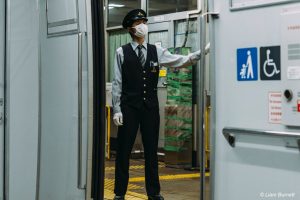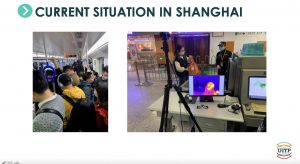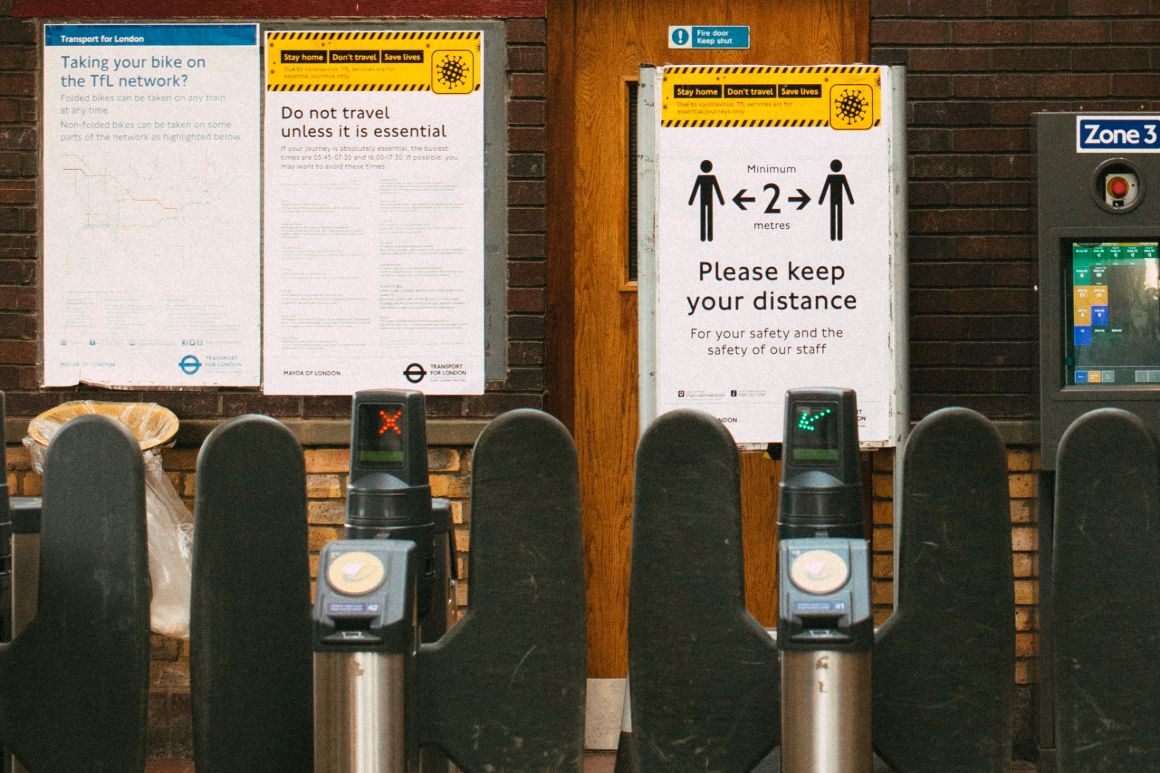Authorities and public transit organisations have yet to agree on the best way forward to revive public transport while ensuring safety from Covid-19.
So far it looks like most decision makers consent on the measure of wearing face masks. These are now obligatory in public transport in countries like Germany, China, and Spain.
However, opinions are divided when it comes to social distancing. That is because keeping the safe distance of 1,5 – 2 meters among passengers is incredibly hard to implement post-lockdown, and it substantially cuts revenue from passes and tickets.
Naturally transport companies want to see their vehicles being used at full capacity again. Yet with social distancing in place, the occupancy rate is reduced by more than 65%. This percentage would be even higher in London, as the UK’s Transport Secretary warned: ‘there would only be effective capacity for 1 in 10 passengers in many parts of our network, just 1/10 of the old capacity”.
Revenue losses from the lack of sale of passes and tickets amount to billions of dollars. In the past months, New York’s Metropolitan Transit Authority alone received $ 8 bn in federal bailout money. Similarly, London’s TfL received a package worth 1,5 billion pounds to keep service running until September.

According to experts, crucial to social distancing is to not be too close to other people for more than a short period of time. Currently operators make use of signs and markers to remind passengers to keep distance, and on many vehicles, seats are blocked to ensure that passengers are spread out.
When distancing is not possible, people are advised to avoid physical contact and face away from each other.
As an additional measure, security guards with crowd management training are being deployed at some stations to ensure distancing, as more people are expected to return to work in the coming weeks.
- 4 ways public transport changed during Covid-19
- Public transport changes during Covid-19 in Barcelona
An alternative distancing procedure currently mulled by operators is the use of a travel booking reservation system. This is an unorthodox idea which companies can make possible through their websites or apps.
The MTA is considering this option through its Omny payment system. In the UK, train operator LNER already introduced such a reservation system on its network.
With regards to face masks, how effective they are depends to a large extent on the type. The most common are surgical masks, which filter around 70% of the air. N95 respirators are the most effective, although these are in shortage even to medical personnel. The third option are home-made masks, which block under 50% of bacteria.
At the same time, the proper ventilation of a vehicle or station is as important when people have to sit in a closed space together. Some measures include the opening of windows, ventilation through air conditioning, as well as disinfecting the air filters.
No social distancing in Shanghai public transport
Managing director of Group Keolis Anne Mathieu announced last week a new set of rules for Shanghai’s public transport. These involve the mandatory use of face masks, random temperature checks at some stations, but no social distancing.

At the beginning of the outbreak earlier this year, Shanghai was regarded as a city with a high risk of growth of infections because it is a key transportation hub and because of its close economic ties with the Hubei province, the source of the virus outbreak.
Now the city’s authorities are confident that the spread of the virus is contained at a level that allows them not just the easing of social distancing restrictions in public transport, but also the reopening of schools, public spaces, and venues such as the city’s Disneyland.
‘We are not facing a problem of technology but of geometry’
The European Commission published a set of guidelines this month to be used with the gradual lifting of restrictions. The recommendations include social distancing and wearing face masks, as well as isolating drivers from passengers and increasing the frequencies of operation.
The Commission acknowledges that social distancing will not be possible everywhere. “As with any other activity, a completely risk-free environment for traveling is not feasible. A second wave of infections or the existence of contagion nuclei is possible; as such, adequate plans must be established for the eventual reintroduction of restrictive measures ”.
Earlier in March the UITP released a similar set of guidelines for transit operators to navigate the Covid-19 crisis. “We are not facing a problem of technology but of geometry, how do we want to distribute the urban space?”, says Dionisio González, director Advocacy & Outreach at the International Association of Public Transport (UITP), with regards to social distancing limitations.



